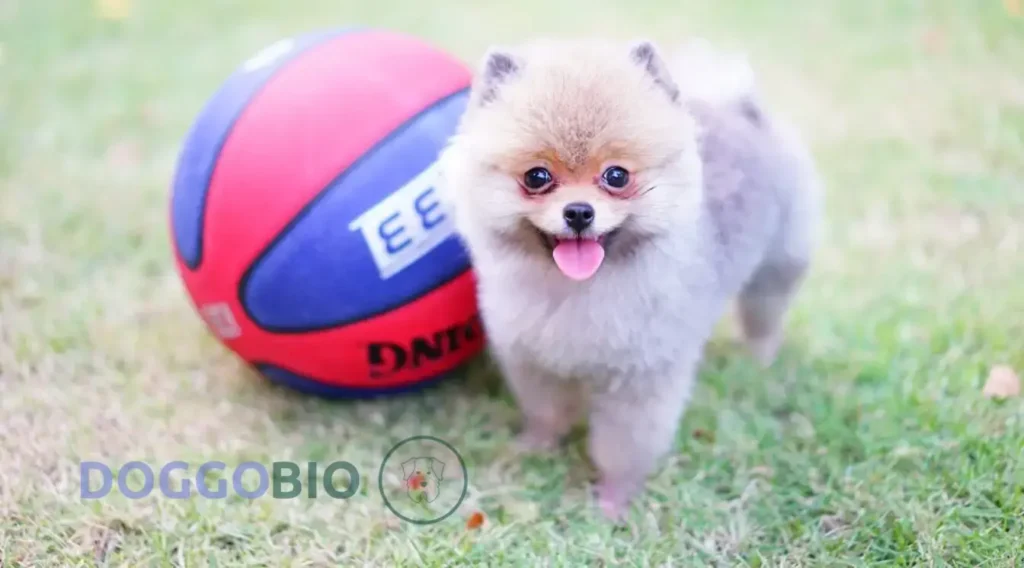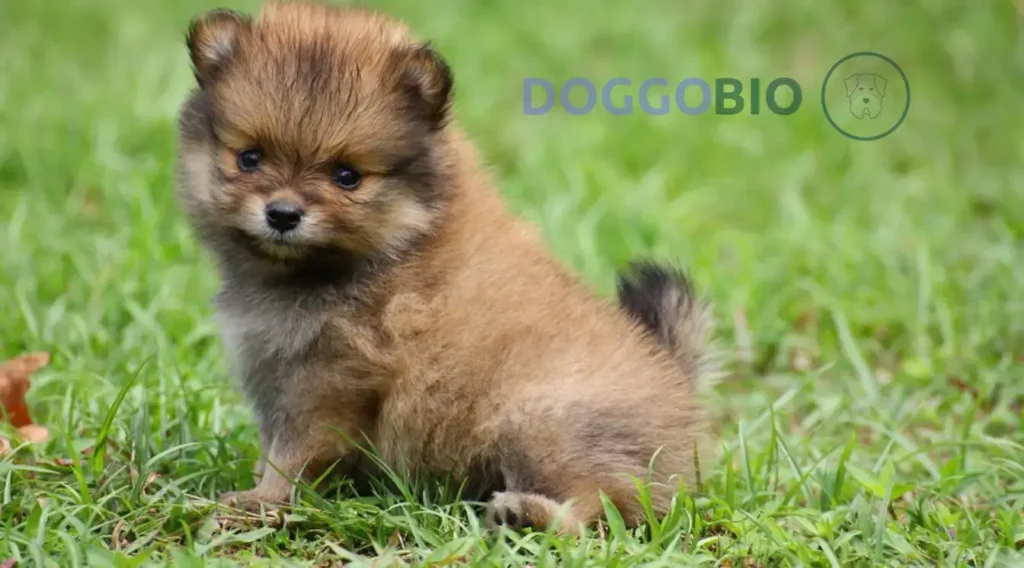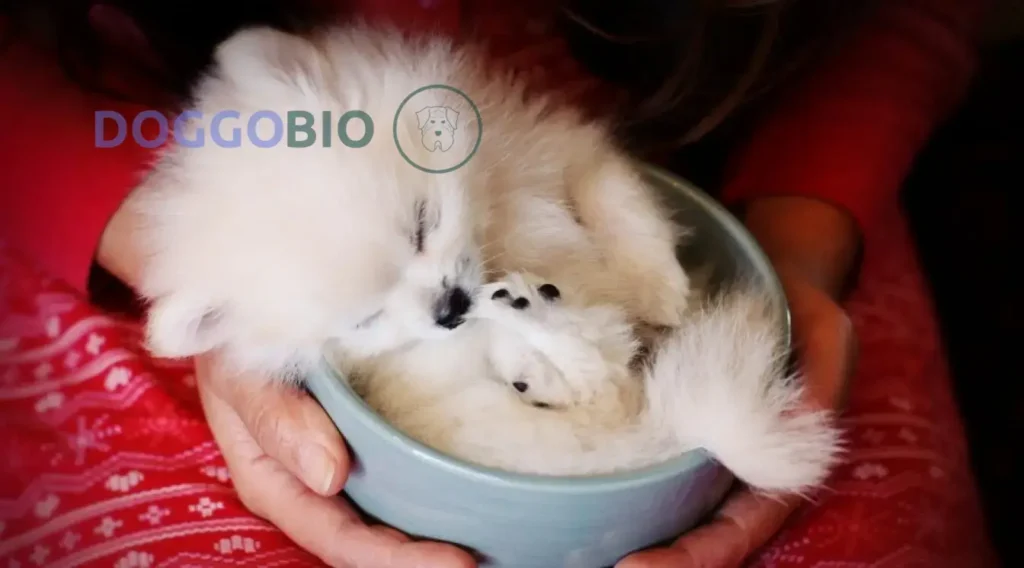Pomeranians, with their fluffy double coats and endearing teddy bear appearance, are undoubtedly one of the most popular toy breeds in the world. Their vibrant personalities and petite size make them a favorite among dog enthusiasts.
However, a common question among potential Pomeranian owners and those with one is: “Do Pomeranians shed?” The answer is yes, they do. However, shedding is just one aspect of their grooming needs.
In this guide, we’ve delved into the shedding habits of Pomeranians, exploring why they shed and providing tips on managing their fur effectively through dog grooming. Whether you’re a prospective Pomeranian owner or simply curious about these fluffy companions, understanding their shedding patterns and implementing appropriate grooming practices can help minimize the impact of shedding on both your home and your Pomeranian’s coat health.
Do Pomeranians Shed?

Yes, Pomeranians do shed. Contrary to popular belief, these small, fluffy dogs are not hypoallergenic. They have a double coat that sheds regularly, especially during certain seasons.
Many potential Pomeranian owners are often surprised to learn about their shedding nature, given their small size. However, their luxurious coat requires consistent care and attention to manage the shedding and remain healthy and vibrant.
Shedding is a natural process that helps the dog regulate its body temperature and maintain a healthy coat. While it may seem like a lot, understanding the reasons behind the shedding can make it more manageable for owners.
The misconception that small breeds don’t shed as much is debunked with Pomeranians, as their voluminous coat is a testament to their shedding nature.
When do Pomeranians shed?
Pomeranians shed year-round, but there are two peak shedding seasons: spring and fall. They shed their undercoat during these times, leading to more noticeable shedding. This increased shedding is due to preparing their coat for the upcoming season.
In the spring, they shed to lighten their coat for the warmer months, and in the fall, they shed to make way for a denser winter coat. Understanding their shedding cycle can help owners prepare and manage it effectively, ensuring that the dog remains comfortable and the home remains relatively fur-free.
It’s also worth noting that environmental changes, such as moving to a new location with a different climate, can also affect their shedding patterns.
Why do Pomeranians shed so much?

1. Double-Coated Nature
Their double coat naturally sheds to allow new hair growth. This dual layer of fur protects them from weather conditions but also means more hair to shed.
The double coat is a defining feature of the breed, providing insulation against cold and heat. This coat is essential for their survival in colder climates, but it also means they will shed regularly to maintain it.
2. Puppy Shedding
Puppies shed their soft baby fur to make way for adult coats. This transition can surprise new owners, but it’s a natural process. As they grow, their coats change, and understanding this can help manage the shedding. Puppy fur is softer and finer, and as they mature, their adult coat comes in, which is denser and more robust.
3. Seasonal Shedding
They shed more during spring and fall to prepare for temperature changes. As the seasons change, so does their coat’s needs.
This is a crucial period where regular grooming can make a significant difference in managing the shedding. The undercoat, which provides insulation, is primarily shed during these times.
4. Nutrient Deficiency
Lack of essential nutrients can increase shedding. A balanced diet is crucial for maintaining a healthy coat. Ensuring they receive all the necessary vitamins and minerals can reduce excessive shedding. For instance, foods rich in omega-3 fatty acids can promote healthy skin and reduce shedding.
5. Dehydration
Insufficient water intake can affect their coat’s health. Always ensure your Pomeranian has access to fresh water. Hydration plays a vital role in skin and coat health.
6. Parasites
Fleas and ticks can cause excessive shedding. Regular check-ups and preventative measures are essential. Keeping them parasite-free is not only crucial for their coat but also for their overall health.
7. Allergies
Allergic reactions can lead to hair loss. Common allergens include certain foods, pollen, or household products. Identifying and eliminating allergens can reduce shedding and improve their comfort.
8. Stress and Anxiety
Emotional distress can trigger shedding. Changes in the environment or routine can stress a Pomeranian. Providing a stable environment and training can help reduce stress-related shedding.
9. Hormonal Changes
Conditions like pregnancy can affect their coat. Hormonal imbalances can lead to increased shedding, so it’s essential to be aware of any changes in their behavior or appearance. Spaying or neutering can also affect their hormones and, consequently, their coat.
10. Health issues
Certain illnesses can lead to hair loss. Regular vet visits can help catch and address these issues early. A healthy Pomeranian will naturally have a healthier coat. Underlying health issues, such as thyroid problems, can lead to increased shedding.
How do I make my Pomeranian less shed?

1. Regular brushing
It helps remove loose hairs and prevents matting. Daily brushing sessions can also be a bonding experience. This helps manage the shedding and distributes the natural oils in their coat, keeping it shiny and healthy. It’s also a great way to check for skin issues or parasites.
2. Avoid frequent baths
Overbathing can strip natural oils. It’s essential to use dog-specific shampoos that moisturize their skin.
While keeping them clean is essential, doing just what is necessary is crucial. Bathing them too often can dry their skin, leading to more shedding.
3. Trimming
Regular trims can manage shedding. It also helps in giving them a neat appearance. A professional groomer can help ensure the trim is done correctly without damaging the coat.
Trimming can reduce the volume of the coat, making it easier to manage and reducing the appearance of shedding.
4. Nutritious diet
Essential for a healthy coat. High-quality dog food can make a significant difference. The proper nutrients can strengthen their hair follicles, reducing shedding. Foods rich in proteins and essential fatty acids can promote a healthy, shiny coat.
5. Offer supplements
Omega fatty acids can improve coat health. Consult your vet before introducing any supplements. These can provide the additional support their coat needs, especially during peak shedding seasons.
6. Exercise
Promotes overall well-being. Active Pomeranians tend to have healthier coats. Exercise also helps reduce stress, which can be a factor in excessive shedding. Regular play and walks can keep them happy and healthy.
7. Vet Check-ups
Regular vet visits ensure no underlying issues. It’s always better to be proactive about health. A vet can guide managing shedding and ensure their coat remains healthy.
8. Spaying/Neutering
It can reduce shedding in some cases. It also has various health benefits. This procedure can also help manage hormonal changes that can affect their coat.
9. Home Cleaning
Regular cleaning can manage hair around the home. Investing in a good vacuum can be a game-changer. Regular cleaning can help reduce the amount of hair around the house, making the environment more comfortable for the dog and the owner.
10. Accept Pomeranian Hair
Embrace the shedding as part of owning a Pomeranian. After all, it’s a small price to pay for their companionship. While challenging, understanding and accepting it can make the experience more enjoyable. Sometimes, it’s about adjusting our mindset and understanding that shedding is a natural part of owning a furry friend.
Frequently Ask Question
Are Pomeranians Hypoallergenic?
No, they are not considered hypoallergenic dog. While no dog is truly hypoallergenic, some breeds shed less and produce fewer allergens.
It’s essential to understand this before bringing a Pomeranian into a home with allergy sufferers. Their double coat produces dander, which can trigger allergies in sensitive individuals.
Do Lavender Pomeranians Shed A Lot?
Yes, Lavender Pomeranians do shed, but not excessively. They fall into the category of medium shedders, typical for Pomeranian breeds.
Shedding is a natural process for most dogs, including Pomeranians, where old or damaged hair is replaced by new growth. While they may not shed as much as some other breeds, regular grooming remains essential to manage their shedding and maintain the health of their coats.
Do Pomeranians have double-coated?
Yes, they have a dense double coat. This coat type requires regular grooming to stay in top condition. The double coat is one of their most distinctive features, giving them their iconic fluffy appearance. This coat type is also what leads to their regular shedding.
Do Pomeranians Have Hair or Fur?
They have fur, specifically a double coat. This fur gives them their iconic fluffy appearance.
Understanding the difference between hair and fur can help owners provide the best care for their Pomeranian’s coat. While the terms are often used interchangeably, understanding the nuances can benefit grooming.
Do Pomeranians Shed all year?
Yes, but more during spring and fall. Various factors, including daylight and temperature, influence their shedding patterns. While they shed year-round, knowing their peak shedding seasons can help manage the shedding more effectively.
It’s also worth noting that environmental changes, such as moving to a new location with a different climate, can also affect their shedding patterns.
Do Pomeranians Shed in the Fall?
Yes, it’s one of their peak shedding seasons. They prepare their coat for the colder months ahead. Their skin naturally adjusts as the days get shorter and the temperatures drop, increasing shedding.
This is when owners might notice more fur on their furniture and clothing.
Do Pomeranians Shed in the Summer?
Yes, they shed moderately during the summer. This shedding helps them stay cool. As the temperatures rise, their coat adjusts to help regulate their body temperature, leading to shedding.
The summer months can be challenging for Pomeranians, especially in extremely hot climates, so ensuring a comfortable environment is essential.
Do Pomeranians Shed in the winter?
Yes, Pomeranians do shed in the winter, but they shed less compared to spring and fall. During the winter months, their coat becomes denser to provide warmth, which helps to regulate their body temperature in colder weather.
While the shedding may decrease in winter, it’s still essential to provide regular grooming to ensure their coat remains healthy. The dense undercoat offers insulation against the cold but requires regular care to prevent matting and tangling. By brushing your Pomeranian regularly, you can help remove loose fur, dirt, and debris, keeping their coat in optimal condition throughout the year.
Conclusion
In conclusion, do Pomeranians shed? Yes, Pomeranians, like many other breeds, do shed. Their thick double coat undergoes natural shedding cycles to allow for new hair growth and adapt to changing seasons.
While their shedding might be a concern for some, it’s manageable with regular grooming and proper care. Potential and current Pomeranian owners must be informed and prepared for this aspect of their care.
After all, the joy and companionship that a Pomeranian brings to a household far outweigh the minor inconvenience of dealing with some extra fur around the home.

Pingback: Lavender Pomeranian Love: A Unique Canine Hue 2024
Pingback: Are Pomeranians Hypoallergenic? Allergies Beware 2024